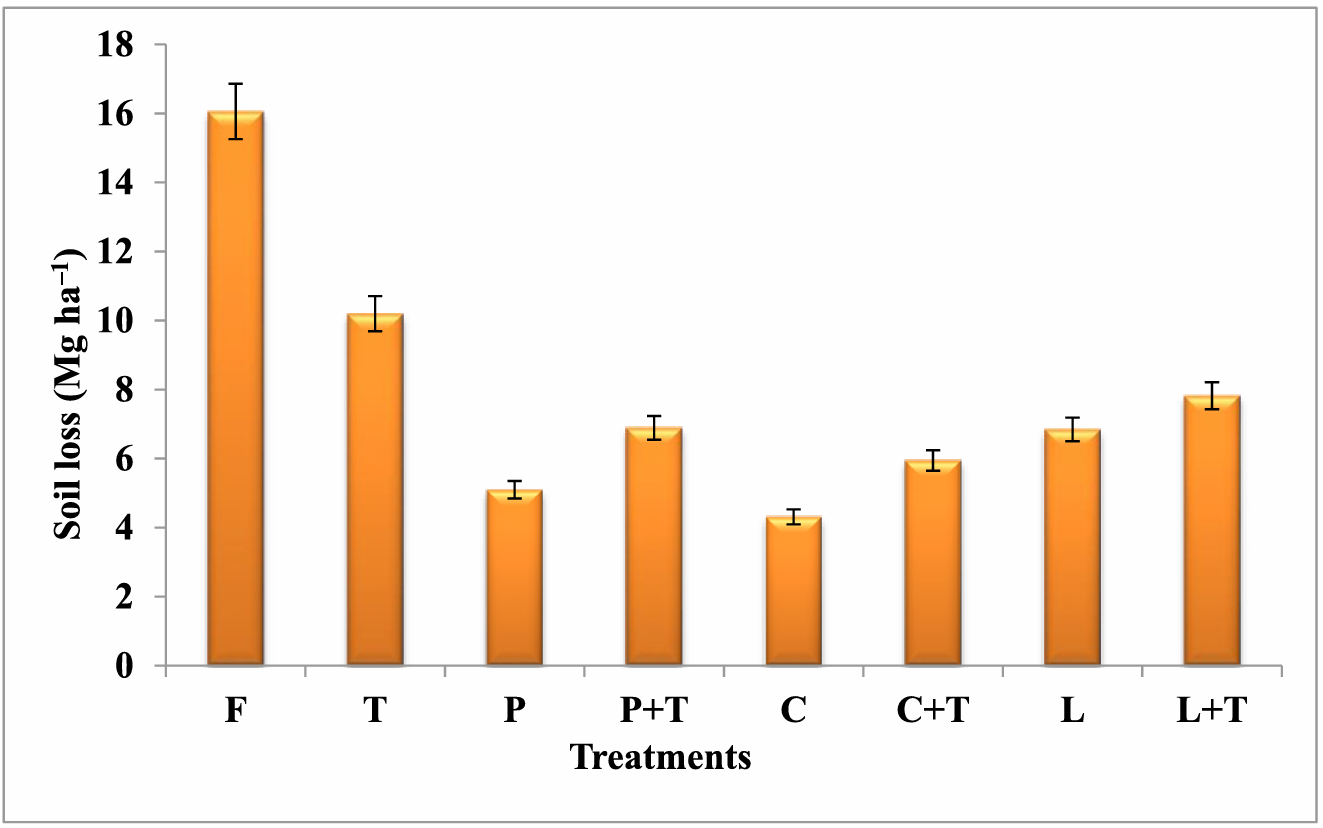December, 2024 | Environmental and Sustainability Indicators | Source |
Introduction: Agroforestry offers a cost-effective solution for restoring degraded mountain lands by stabilizing soil, reducing erosion, and improving water flow. Canopy management further boosts tree–crop productivity and minimizes competition for resources. To address existing research gaps in resource conservation, researchers from the ICAR-Indian Institute of Soil and Water Conservation conducted a four-year randomized block experiment. The study evaluated mulberry-based agroforestry systems intercropped with turmeric, focusing on their effects on soil erosion, nutrient retention, carbon (C) sequestration, and overall productivity.
Key findings: Mulberry coppicing combined with turmeric significantly reduced surface runoff by 45.3% and soil loss by 73.3% compared to fallow plots. This treatment also lowered nitrogen, phosphorus, and potassium losses by 64.7%, 74.2%, and 65.5%, respectively, over fallow, and by 31.8%, 63%, and 22.5% compared to sole turmeric. Soil structure improved under mulberry-based systems, with water stable aggregates (WSA) increasing by up to 37% under coppicing and pollarding treatments. The pollarding + turmeric combination led to the highest soil fertility levels and enhanced soil organic C (SOC) stock by 23.3%, with SOC sequestration rates rising by 107.4%. It also improved soil moisture by 25% relative to sole turmeric cropping. While sole mulberry under lopping achieved the highest above-ground biomass and C sequestration, combining mulberry and turmeric under pollarding or lopping yielded the highest below-ground biomass and C storage. Turmeric yield increased by 17.6% under the pollarded mulberry system, with better rhizome development, although above-ground growth remained highest in sole turmeric plots.
These results suggest that mulberry-based agroforestry systems, especially when paired with canopy management practices, offer a sustainable strategy for rehabilitating degraded lands, enhancing yields, and mitigating soil erosion—particularly in the Western Himalayan region and similar agro-climatic zones. However, further research is needed to assess long-term impacts on soil biological health, including microbial dynamics and enzyme activity.

Figure | Effect of different treatments on soil loss (Average data of four years). (F: fallow; T: sole turmeric; P: pollarding; P+T: pollarding +turmeric; C: coppicing; C+T: coppicing +turmeric; L: lopping; L+T: lopping +turmeric. Error bars denote least significant difference (P =0.05).



